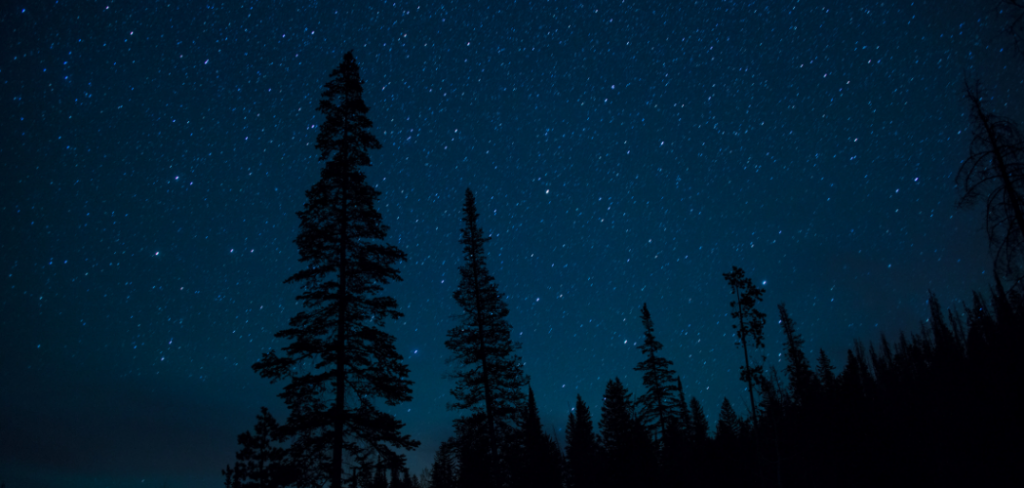We have a pitch-dark sky most of the time at night. You could see, or not, the moon growing or decreasing in size and form. You may be looking at some clouds making that dark background a little purple-ish. But the other things you may find are the stars. Those little white dots or pinpoints are just like sparkles in the night sky. These little sparkles make the night more interesting. But have you noticed how they look like they flicker or twinkle? If you want to know why do stars twinkle, read on.
Today we are looking into this phenomenon that makes stars look like they are turning on and off repeatedly. In some instances, they appear like they are moving when they are actually not. Let’s find out why do stars twinkle in the night sky and what can be possibly causing this to happen in the first place.
Astronomical Scintillation:
Let’s discuss what is astronomical scintillation. It sounds very fancy, talking about space. The thing is, this can be a technical way to explain why do stars twinkle.
You need to know that our planet has some layers of gas up there. One of which we called the atmosphere. It is the one that protects us from UV rays from the sun. It gave us oxygen to breathe, the one that maintains the temps and makes life on Earth possible.
But, as many gases are up there, so there’s movement. All those different gases, nitrogen, oxygen, and lots of others interacting with one other. On the road can distort the image we perceive from objects outside of the world, like stars.
This movement of those gases is that main accountable for astronomical scintillation. It’s the way the stars twinkle when you see them from the Earth. It is almost the identical effect you’ll see in scorching roads within the distance. You may see the centerline or other features of the road distorted.
However, you’ll see the stars in all their beauty without them twinkling. That’s why space telescopes just like the Hubble were created in the first place. It’s not to simply see stars, but to find more about space.
If stars twinkle, can planets twinkle too?
If the stars twinkle, how about the planets? They are big enough to see them from here with proper equipment. Unlike stars, planets don’t twinkle. At least not as much as stars. Stars are so far away that they appear as pinpoints or white dots of light in the night sky. Since planets are closer to Earth, they shine more steadily. They appear not as pinpoints but as disks in our sky.
Planets may be identified as the dots in the skies that do not twinkle much. You need adaptive optics systems in the lenses of the telescope or what you may need to do is to ask NASA when you want clearer images of space. Maybe some of them would have been shot from the Hubble space telescope, and for a very good reason.
If stars twinkle, can the Hubble see the stars clearer?
Hubble or the Hubble Space Telescope is a large telescope in space. It had been launched in 1990 by NASA. The Hubble is as long as a college bus and weighs the maximum amount as two adult elephants. It travels around Earth at about 5 miles (ca. 8 km) per second.
Hubble faces space to require pictures of planets, stars, and galaxies. Scientists learned lots about space from Hubble pictures. The photographs are beautiful to look at too. It has seen stars being born and die and has observed galaxies that are trillions of miles away. Hubble also has seen comet pieces crash into the gases above Jupiter.
The Hubble isn’t going anywhere for a minimum of a few decades more, which shows how powerful it is. The subsequent one, the James Webb space telescope would go up sometime next year. This is to replace the Hubble with a far bigger and more capable space telescope.
But when it involves catching the space altogether its glory, the Hubble does its job amazingly. That’s why the Hubble can see the stars clearer.
Conclusion:
After talking a lot about space and telescopes, let’s wrap things up.
Stars twinkle when seen from the Earth. That is simply because we have an atmosphere with lots of gases moving around, distorting the light that is coming from those stars.
The same applies to the planets and even the moon. But as you probably know by now, the planets and moon do not twinkle as much as stars do.
To get a view of the stars minus the twinkling effects, use better optics like the adaptive optic systems or by using a space telescope like the Hubble. To know more about stars, an inquiry with NASA would help in your research.
Looking up the stars twinkle at night is pretty much okay for us. Match that with the sounds of crickets chirping away in a quiet night, sounds like an awesome experience.
